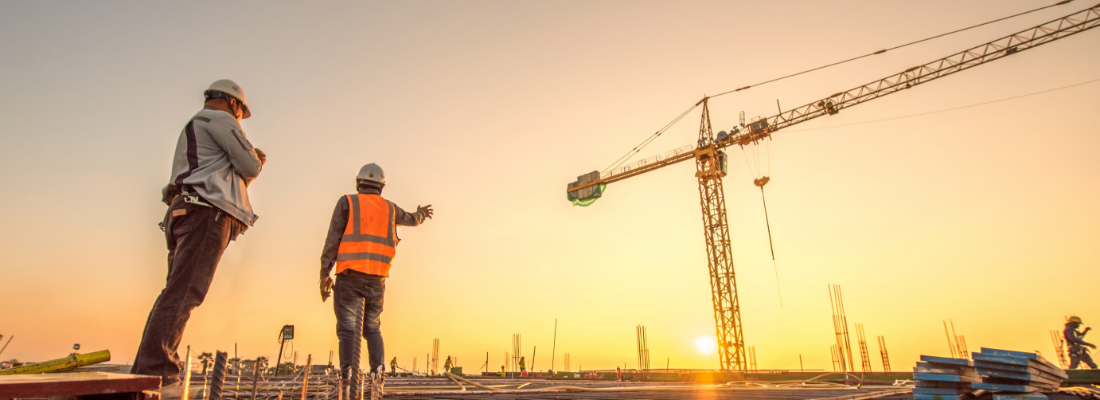Blog
Construction Safety: Best Practices and Consultancy Insights for a Safer Site

Construction sites can be inherently dangerous, with numerous risks and hazards present at every turn. As such, ensuring safety on construction sites should be a top priority for all involved in the industry, from workers to managers and project owners. By adopting the best practices and insights from construction consultancy experts, it is possible to make construction sites safer, protect workers, and reduce the risk of accidents and injuries. In this blog, we will outline some of the top construction safety practices and consultancy insights to guide you towards a safer site.
Create a Comprehensive Safety Plan
Every construction site needs a comprehensive safety plan that outlines the procedures, protocols, and practices to be followed by workers and managers to ensure safety. The safety plan should be developed with the help of a construction consultancy partner to identify potential hazards and risks and develop strategies to mitigate them. It should be clearly communicated to all workers, with training provided to ensure that everyone understands their roles and responsibilities in ensuring safety. The safety plan should also be reviewed and updated regularly to keep up with the changing circumstances of the project and its evolving risks.
Train Workers on Safety Best Practices
In addition to providing workers with a comprehensive safety plan, it is essential to train them in best practices for staying safe on the job. This includes training on the proper use of equipment, tools, and machinery, as well as on hazard recognition and mitigation, emergency response, and incident reporting. Workers should also be trained in how to recognize and respond to potential safety risks and hazards, and how to report these to their supervisors or safety officers. By providing workers with the knowledge and skills needed to work safely, you can help to reduce the risk of accidents and injuries on your site.
Provide the Right Personal Protective Equipment (PPE)
Personal protective equipment (PPE) is an essential component of any construction site safety program. It includes items such as hard hats, safety glasses, earplugs, gloves, and boots, which are designed to protect workers from various hazards and risks. It is the responsibility of the employer to provide workers with the necessary PPE and ensure that it is used properly. Consultancy experts can advise on the appropriate PPE for different job roles and hazards, and on how to ensure that PPE is properly maintained and replaced when necessary.
Implement Site-Specific Safety Protocols
Every construction site is different and presents unique safety challenges and risks. To ensure safety, it is important to implement site-specific safety protocols that are tailored to the specific site and its hazards. This involves conducting a thorough site assessment to identify potential hazards and risks, and then developing and implementing safety protocols to mitigate these risks. The site-specific safety plan should be developed with the help of a construction consultancy partner to ensure that it is comprehensive and effective.
Monitor and Analyze Safety Performance
Monitoring and analyzing safety performance is essential to maintaining a safe construction site. This involves tracking safety incidents, near-misses, and hazards, as well as measuring safety performance metrics, such as injury rates and safety training completion rates. By analyzing this data, it is possible to identify trends and patterns, and to develop strategies for improving safety performance. Construction consultancy partners can help to set up effective safety performance monitoring and analysis systems and can provide insights and recommendations based on the data collected.
Conduct Regular Safety Audits and Inspections
Regular safety audits and inspections are essential to maintaining a safe construction site. These audits and inspections should be conducted by an independent third-party or a qualified safety professional to ensure that they are objective and comprehensive. The audits and inspections should be conducted on a regular basis to identify potential safety risks and hazards and to ensure that safety protocols are being followed. Construction consultancy partners can provide auditing and inspection services and can help to identify areas for improvement and develop strategies to address safety issues.
Final Thoughts
Construction safety is essential to maintaining a healthy and productive job site. While accidents may happen, implementing best practices can help prevent them from occurring. With the help of consultancy firms, construction companies can identify potential hazards and implement measures to address them, as well as ensure that all workers are provided with proper training and equipment. By working together, construction companies and consultancy firms can create a safe and productive job site that benefits everyone involved.
